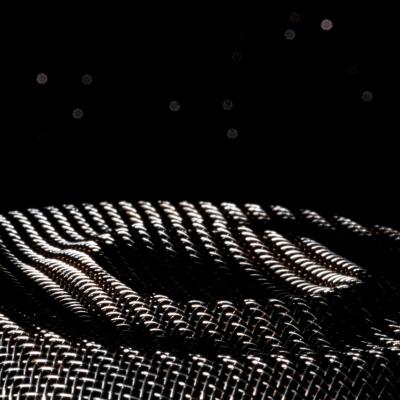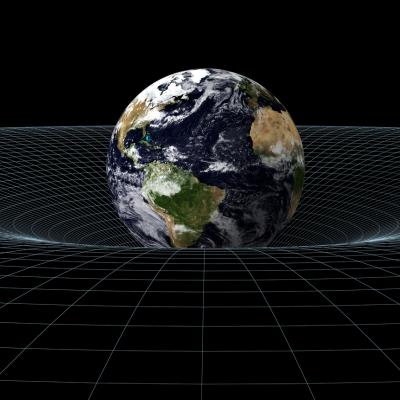Anúncios
The detection of gravitational waves represents one of the greatest scientific achievements of the 21st century. Predicted by Albert Einstein over a hundred years ago, these ripples in spacetime have opened a new window into observing the universe. Their study marks the beginning of a new era in modern astronomy.
This technology not only confirmed fundamental aspects of general relativity but also allows us to investigate extreme cosmic phenomena. The collision of black holes and neutron stars can now be analyzed in unprecedented detail. With this, we expand our understanding of the origin and evolution of the cosmos.
Anúncios

How Do Gravitational Waves Work?
Gravitational waves are disturbances in the fabric of spacetime that occur when massive objects accelerate, especially during catastrophic events such as the collision of black holes or neutron stars. According to Einstein’s general theory of relativity, massive bodies curve the surrounding spacetime, creating a gravitational field. When these bodies move, they generate ripples that propagate at the speed of light, similar to how a stone thrown into a lake creates waves on the water’s surface. These waves carry information about their origins and the very nature of gravity, providing a unique way to observe the universe.
The detection of gravitational waves requires extremely sensitive instruments, as the distortions they create in spacetime are minimal. The Laser Interferometer Gravitational-Wave Observatory (LIGO) is a facility designed to measure these subtle changes. It uses laser beams and a series of mirrors to detect the incredibly small variations in distance caused by passing gravitational waves. When a gravitational wave passes through Earth, it stretches space in one direction while compressing it in another, leading to measurable changes in the lengths of the interferometer’s arms.
The importance of gravitational waves goes beyond mere detection; they offer a new way to observe the universe. Traditional astronomy relies on electromagnetic radiation—light, radio waves, X-rays, etc.—to study celestial phenomena. Gravitational waves, however, provide a different perspective, allowing scientists to observe events that would otherwise be invisible. For example, the merger of two black holes emits gravitational waves that can be detected even if the black holes do not emit light. This capability opens new avenues for research in astrophysics and cosmology.
The study of gravitational waves is still in its infancy, but it has already yielded remarkable insights into the workings of the universe. The first detection of gravitational waves in 2015 confirmed a key prediction of Einstein’s theory and marked the beginning of a new era in astronomy. As detection techniques improve and more observatories come online, the potential for groundbreaking discoveries only grows. Gravitational wave astronomy promises to illuminate aspects of the universe that have remained hidden, paving the way for a deeper understanding of the cosmos.
What Are Gravitational Waves?

Gravitational waves are disturbances in spacetime caused by intense astrophysical events. They propagate at the speed of light and carry valuable information about their sources. They are like fingerprints of cosmic occurrences.
These waves arise when massive objects accelerate, such as in the case of black hole mergers. During these events, the deformation in spacetime is so intense that it produces ripples. These ripples travel for billions of light-years before reaching Earth.
Einstein predicted their existence in 1916 with the general theory of relativity. However, direct detection only became possible nearly a century later. This required instruments of almost unimaginable precision to capture such subtle signals.
The study of gravitational waves has become a fundamental tool in modern physics. They offer a complementary means to light for investigating the universe. And with them, we have begun to hear the “sounds” of deep space.
How Does the Detection of These Waves Work?
Detection is carried out through extremely sensitive interferometers like LIGO. They use laser beams reflected by mirrors in long tunnels. The slightest variation in the distance between the mirrors reveals the passage of a gravitational wave.
When a wave passes through Earth, it compresses and stretches space in opposite directions. This deformation is tiny—thousands of times smaller than the diameter of a proton. Even so, it can be measured with the right technology.
The detected signal is analyzed by computers that compare it to theoretical models. In this way, scientists can determine the origin and nature of the event. It’s a complex process that requires extreme precision.
Observatories like LIGO and Virgo work together. This international collaboration increases the sensitivity and accuracy of the measurements. The more observatories there are, the better the triangulation of the source in the sky.
Advantages of the Detection of Gravitational Waves Predicted by Einstein

The detection of gravitational waves offers numerous advantages that significantly enhance our understanding of the universe. One of the main benefits is the ability to observe astronomical events that are invisible to traditional telescopes. For example, mergers of black holes and neutron stars can produce powerful gravitational waves without emitting light. This allows scientists to study these events in detail, gaining insights into the nature of these enigmatic objects and the extreme physics involved.
Another advantage of gravitational wave detection is the opportunity to test the predictions of general relativity under extreme conditions. Although Einstein’s theory has been confirmed by various experiments, the detection of gravitational waves provides a unique scenario to examine its validity in situations involving immense gravitational forces. By analyzing the properties of the detected waves, researchers can assess whether they conform to the predictions of general relativity or if there are deviations that might suggest new physics.
Gravitational waves also contribute to the field of cosmology by providing a new tool for measuring distances in the universe. The ability to determine the distance to a gravitational wave source can help refine our understanding of the expansion of the universe and the distribution of matter. This information is crucial for addressing fundamental questions about the nature of dark energy and the overall structure of the cosmos.
Additionally, the detection of gravitational waves has the potential to revolutionize multi-messenger astronomy. By combining gravitational wave observations with electromagnetic signals (such as light or gamma rays) from the same events, scientists can create a more comprehensive picture of cosmic phenomena. This synergy allows for a richer understanding of events like supernovae, gamma-ray bursts, and the formation of heavy elements, leading to a more holistic view of how the universe works.
How to Understand the Detection of Gravitational Waves Predicted by Einstein
Gravitational waves are ripples in spacetime caused by cosmic events.
The LIGO observatory plays a crucial role in detecting these waves.
Einstein’s general theory of relativity predicts the existence of gravitational waves.
The detection of these waves helps us learn more about black hole mergers.
Wave astronomy opens new avenues for understanding the universe.
The detection of gravitational waves enhances our knowledge in astrophysics.
Understanding the detection of gravitational waves involves recognizing the fundamental principles of physics that govern their existence. Gravitational waves emerge from the acceleration of massive objects, and their detection depends on highly sensitive instruments capable of measuring infinitesimal changes in distance. The LIGO observatory, with its advanced technology, serves as a pillar for this field, allowing scientists to capture and analyze these elusive signals.
Einstein’s general theory of relativity is central to the concept of gravitational waves. It postulates that gravity is not just a force, but a curvature of spacetime caused by mass. When massive objects, like black holes, orbit each other and eventually collide, they create gravitational waves that propagate through the universe. Detecting these waves confirms Einstein’s predictions and offers a unique opportunity to explore the fundamental nature of gravity.
The study of gravitational waves has significant implications for our understanding of black hole mergers. By analyzing the characteristics of the detected waves, scientists can gather information about the masses, spins, and distances of the merging black holes. These data not only deepen our understanding of black hole formation and evolution but also illuminate the dynamics of extreme gravitational environments.
Wave astronomy is an emerging field that harnesses the detection of gravitational waves to expand our knowledge of the universe. Unlike traditional astronomy, which relies on electromagnetic radiation, wave astronomy allows scientists to explore cosmic events that are invisible in other wavelengths. This new perspective opens doors to discovering previously unobserved phenomena and enhances our understanding of the complexities of the universe.
Did You Enjoy Learning About the Detection of Gravitational Waves Predicted by Einstein?
The exploration of gravitational waves and their detection is a fascinating journey that continues to unfold. As scientists delve deeper into this field, the potential for revolutionary discoveries and insights into the deepest mysteries of the universe only grows. The ability to observe cosmic events through the lens of gravitational waves is a testament to human ingenuity and the relentless pursuit of knowledge.
We are on the brink of a new era in astronomy, and the excitement surrounding gravitational wave research is palpable. Ongoing advances in detection technology and the collaborative efforts of the global scientific community promise to unveil new wonders and deepen our understanding of the cosmos. The future of gravitational wave astronomy is bright, and there is much more to discover.
Frequently Asked Questions
What are gravitational waves predicted by Einstein?
Gravitational waves are waves in space and time. Einstein predicted their existence due to the motion of massive objects.
How are gravitational waves detected?
They are detected by sensitive instruments. One of the most famous is LIGO, which measures tiny changes in distance.
Why is the detection of gravitational waves important?
The detection of gravitational waves helps us better understand the universe. It can reveal cosmic events such as black hole mergers.
Who discovered gravitational waves?
A team of scientists from LIGO made the first detection in 2015. They confirmed Einstein’s theory with this discovery.
What cosmic events can generate gravitational waves?
Mergers of black holes and neutron stars are examples. These events create gravitational waves that we can detect.
